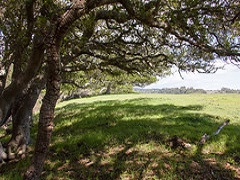Public meetings set on access to Cotoni-Coast Dairies public lands
Organization:
BLM Office:
Media Contact:
 MARINA, Calif. – The Bureau of Land Management will provide information and accept written comments on a proposal to expand public access to the Cotoni-Coast Dairies public lands, in public scoping meetings to be held from 6:30 to 8:30 p.m. at the following locations:
MARINA, Calif. – The Bureau of Land Management will provide information and accept written comments on a proposal to expand public access to the Cotoni-Coast Dairies public lands, in public scoping meetings to be held from 6:30 to 8:30 p.m. at the following locations:
- Wednesday, July 17, Louden Nelson Community Center, 301 Center St., Santa Cruz
- Thursday, July 18, Pacific Elementary School, 50 Ocean St., Davenport (space is limited)
During the meetings, members of the BLM staff will be present to explain the public access proposals to be analyzed in an environmental assessment. Participants will have the opportunity to leave written comments.
The BLM will be accepting written public comments during a scoping period that ends Aug. 2. Those who do not leave written comments at the meeting can submit them on the BLM’s ePlanning website at https://go.usa.gov/xEJAw, via email to [email protected], by fax to 831-582-2266, or by mail to BLM Central Coast Field Office, Attn: Cotoni-Coast Dairies RMPA/EA, 940 2nd Avenue, Marina, CA 93933-6009.
Information related to this planning effort can be found on the BLM’s ePlanning website at https://go.usa.gov/xEJAw. Written comments on BLM’s intent to prepare an environmental assessment and proposed resource management plan amendment will help identify relevant issues, planning criteria and the scope of the environmental analysis.
The Cotoni-Coast Dairies property was donated to the BLM in 2014 and encompasses nearly 6,000 acres along Santa Cruz County’s North Coast. The property was added to the California Coastal National Monument in 2017. Cotoni-Coast Dairies extends along the Pacific Coast Highway near Davenport.
The BLM manages about 245 million acres of public land located primarily in 12 western states, including Alaska, on behalf of the American people. The BLM also administers 700 million acres of sub-surface mineral estate throughout the nation. Our mission is to sustain the health, diversity, and productivity of America’s public lands for the use and enjoyment of present and future generations.
